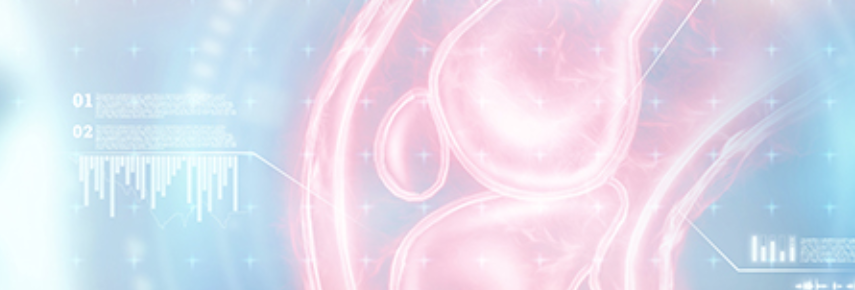Yoo Jin Hong, Kyunghwa Han, Hye-Jeong Lee, Jin Hur, Young Jin Kim, Min Jung Kim, Byoung Wook Choi
{"title":"评估短时心脏磁共振成像用于乳腺癌心脏毒性评估的可行性和扫描间变异性","authors":"Yoo Jin Hong, Kyunghwa Han, Hye-Jeong Lee, Jin Hur, Young Jin Kim, Min Jung Kim, Byoung Wook Choi","doi":"10.1148/ryct.220229","DOIUrl":null,"url":null,"abstract":"<p><p>Purpose To investigate the feasibility and interscan variability of short-time cardiac MRI protocol after chemotherapy in individuals with breast cancer. Materials and Methods A total of 13 healthy female controls (mean age, 52.4 years ± 13.2 [SD]) and 85 female participants with breast cancer (mean age, 51.8 years ± 9.9) undergoing chemotherapy prospectively underwent routine breast MRI and short-time cardiac MRI using a 3-T scanner with peripheral pulse gating in the prone position. Interscan, intercoil, and interobserver reproducibility and variability of native T1 and extracellular volume (ECV), as well as ventricular functional parameters, were measured using the intraclass correlation coefficient (ICC), standard error of measurement (SEM), or coefficient of variation (CoV). Results Left ventricular functional parameters had excellent interscan reproducibility (ICC ≥ 0.80). Left ventricular ejection fraction showed low interscan variability in control and chemotherapy participants (SEM, 2.0 and 1.2; CoV, 3.1 and 1.9, respectively). Native T1 showed excellent interscan (ICC, 0.75) and intercoil (ICC, 0.81) reproducibility in the control group and good interscan reproducibility (ICC, 0.72 and 0.73, respectively) in the participants undergoing immediate and remote chemotherapy. Interscan reproducibility for ECV was excellent in the control group and in the remote chemotherapy group (ICC, 0.93 and 0.88, respectively) and fair in the immediate chemotherapy group (ICC, 0.52). In the regional analysis, interscan repeatability and variability of native T1 and ECV were superior in the anteroseptum or inferoseptum than in other segments in the immediate chemotherapy group. Native T1 and ECV had good to excellent interobserver agreement across all groups. Conclusion Short-time cardiac MRI showed excellent results for interscan, intercoil, and interobserver reproducibility and variability for ventricular functional or tissue characterization parameters, suggesting that this modality is feasible for routine surveillance of cardiotoxicity evaluation in individuals with breast cancer. <b>Keywords:</b> Cardiac MRI, Heart, Cardiomyopathy ClinicalTrials.gov registration no. NCT03301389 <i>Supplemental material is available for this article.</i> © RSNA, 2024.</p>","PeriodicalId":21168,"journal":{"name":"Radiology. Cardiothoracic imaging","volume":"6 1","pages":"e220229"},"PeriodicalIF":3.8000,"publicationDate":"2024-02-01","publicationTypes":"Journal Article","fieldsOfStudy":null,"isOpenAccess":false,"openAccessPdf":"https://www.ncbi.nlm.nih.gov/pmc/articles/PMC10912882/pdf/","citationCount":"0","resultStr":"{\"title\":\"Assessment of Feasibility and Interscan Variability of Short-time Cardiac MRI for Cardiotoxicity Evaluation in Breast Cancer.\",\"authors\":\"Yoo Jin Hong, Kyunghwa Han, Hye-Jeong Lee, Jin Hur, Young Jin Kim, Min Jung Kim, Byoung Wook Choi\",\"doi\":\"10.1148/ryct.220229\",\"DOIUrl\":null,\"url\":null,\"abstract\":\"<p><p>Purpose To investigate the feasibility and interscan variability of short-time cardiac MRI protocol after chemotherapy in individuals with breast cancer. Materials and Methods A total of 13 healthy female controls (mean age, 52.4 years ± 13.2 [SD]) and 85 female participants with breast cancer (mean age, 51.8 years ± 9.9) undergoing chemotherapy prospectively underwent routine breast MRI and short-time cardiac MRI using a 3-T scanner with peripheral pulse gating in the prone position. Interscan, intercoil, and interobserver reproducibility and variability of native T1 and extracellular volume (ECV), as well as ventricular functional parameters, were measured using the intraclass correlation coefficient (ICC), standard error of measurement (SEM), or coefficient of variation (CoV). Results Left ventricular functional parameters had excellent interscan reproducibility (ICC ≥ 0.80). Left ventricular ejection fraction showed low interscan variability in control and chemotherapy participants (SEM, 2.0 and 1.2; CoV, 3.1 and 1.9, respectively). Native T1 showed excellent interscan (ICC, 0.75) and intercoil (ICC, 0.81) reproducibility in the control group and good interscan reproducibility (ICC, 0.72 and 0.73, respectively) in the participants undergoing immediate and remote chemotherapy. Interscan reproducibility for ECV was excellent in the control group and in the remote chemotherapy group (ICC, 0.93 and 0.88, respectively) and fair in the immediate chemotherapy group (ICC, 0.52). In the regional analysis, interscan repeatability and variability of native T1 and ECV were superior in the anteroseptum or inferoseptum than in other segments in the immediate chemotherapy group. Native T1 and ECV had good to excellent interobserver agreement across all groups. Conclusion Short-time cardiac MRI showed excellent results for interscan, intercoil, and interobserver reproducibility and variability for ventricular functional or tissue characterization parameters, suggesting that this modality is feasible for routine surveillance of cardiotoxicity evaluation in individuals with breast cancer. <b>Keywords:</b> Cardiac MRI, Heart, Cardiomyopathy ClinicalTrials.gov registration no. NCT03301389 <i>Supplemental material is available for this article.</i> © RSNA, 2024.</p>\",\"PeriodicalId\":21168,\"journal\":{\"name\":\"Radiology. Cardiothoracic imaging\",\"volume\":\"6 1\",\"pages\":\"e220229\"},\"PeriodicalIF\":3.8000,\"publicationDate\":\"2024-02-01\",\"publicationTypes\":\"Journal Article\",\"fieldsOfStudy\":null,\"isOpenAccess\":false,\"openAccessPdf\":\"https://www.ncbi.nlm.nih.gov/pmc/articles/PMC10912882/pdf/\",\"citationCount\":\"0\",\"resultStr\":null,\"platform\":\"Semanticscholar\",\"paperid\":null,\"PeriodicalName\":\"Radiology. Cardiothoracic imaging\",\"FirstCategoryId\":\"1085\",\"ListUrlMain\":\"https://doi.org/10.1148/ryct.220229\",\"RegionNum\":0,\"RegionCategory\":null,\"ArticlePicture\":[],\"TitleCN\":null,\"AbstractTextCN\":null,\"PMCID\":null,\"EPubDate\":\"\",\"PubModel\":\"\",\"JCR\":\"Q1\",\"JCRName\":\"RADIOLOGY, NUCLEAR MEDICINE & MEDICAL IMAGING\",\"Score\":null,\"Total\":0}","platform":"Semanticscholar","paperid":null,"PeriodicalName":"Radiology. Cardiothoracic imaging","FirstCategoryId":"1085","ListUrlMain":"https://doi.org/10.1148/ryct.220229","RegionNum":0,"RegionCategory":null,"ArticlePicture":[],"TitleCN":null,"AbstractTextCN":null,"PMCID":null,"EPubDate":"","PubModel":"","JCR":"Q1","JCRName":"RADIOLOGY, NUCLEAR MEDICINE & MEDICAL IMAGING","Score":null,"Total":0}
引用次数: 0

 求助内容:
求助内容: 应助结果提醒方式:
应助结果提醒方式:


